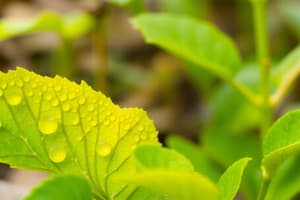Podcast
Questions and Answers
What is an autotroph?
What is an autotroph?
- An organism that produces its own food using sunlight or inorganic compounds (correct)
- An organism that obtains energy from consuming other organisms
- An organism that feeds on dead organic matter
- An organism that relies on other organisms for food
What is a heterotroph?
What is a heterotroph?
- An organism that relies on other organisms for food
- An organism that feeds on dead organic matter
- An organism that obtains energy from consuming other organisms (correct)
- An organism that produces its own food using sunlight or inorganic compounds
What would happen to the grasshopper population if the sparrow were to die off due to a disease?
What would happen to the grasshopper population if the sparrow were to die off due to a disease?
- The grasshopper population would increase due to less predation (correct)
- The grasshopper population would remain unaffected
- The grasshopper population would become extinct
- The grasshopper population would decrease due to increased competition for food
What percentage of energy is typically transferred to the next trophic level?
What percentage of energy is typically transferred to the next trophic level?
What do you think would happen to your food web if the producers died out because of pollution? Is this top-down control or bottom-up control?
What do you think would happen to your food web if the producers died out because of pollution? Is this top-down control or bottom-up control?
Which species in the food web above are the primary consumers?
Which species in the food web above are the primary consumers?
What effect would an increase in the Great Horned Owl population have on the grasshopper population?
What effect would an increase in the Great Horned Owl population have on the grasshopper population?
How would the rabbit population be impacted if the hawk were to be removed from the food web?
How would the rabbit population be impacted if the hawk were to be removed from the food web?
What would happen to the grasshopper population if the sparrow were to die off due to a disease?
What would happen to the grasshopper population if the sparrow were to die off due to a disease?
If the Great Horned Owl or Hawk population were to double, what type of control would this represent in the food web?
If the Great Horned Owl or Hawk population were to double, what type of control would this represent in the food web?
What do you think would happen to the food web if the producers died out because of pollution?
What do you think would happen to the food web if the producers died out because of pollution?
What percentage of energy is typically transferred to the next trophic level in a food web?
What percentage of energy is typically transferred to the next trophic level in a food web?
What are four specific biotic factors in a tundra ecosystem?
What are four specific biotic factors in a tundra ecosystem?
Describe the domino effect that a consumer has if it is removed from the ecosystem.
Describe the domino effect that a consumer has if it is removed from the ecosystem.
Looking at the picture above, what happens to the cownose ray’s population when the shark is removed? Why.
Looking at the picture above, what happens to the cownose ray’s population when the shark is removed? Why.
What is an introduced species?
What is an introduced species?
Describe the four factors that affect population size.
Describe the four factors that affect population size.
What is the difference between immigration and emigration?
What is the difference between immigration and emigration?
If the birth rate is 7, the death rate is 2, the immigration rate is 1, and the emigration rate is 6, is the population increasing or decreasing? How do you know? Show your work using the equation above.
If the birth rate is 7, the death rate is 2, the immigration rate is 1, and the emigration rate is 6, is the population increasing or decreasing? How do you know? Show your work using the equation above.
What does it mean when the population growth is zero?
What does it mean when the population growth is zero?
Describe the difference between density dependent and density independent factors.
Describe the difference between density dependent and density independent factors.
Describe the difference between intraspecific and interspecific competition.
Describe the difference between intraspecific and interspecific competition.
Using your knowledge of populations, explain why the wolf and the rabbit population fluctuate over time. Be sure to include the term carrying capacity in your answer.
Using your knowledge of populations, explain why the wolf and the rabbit population fluctuate over time. Be sure to include the term carrying capacity in your answer.
Flashcards are hidden until you start studying





